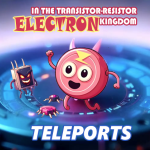Energy Sources: Energy Storage and High-Power Spike
11 Oct 2024
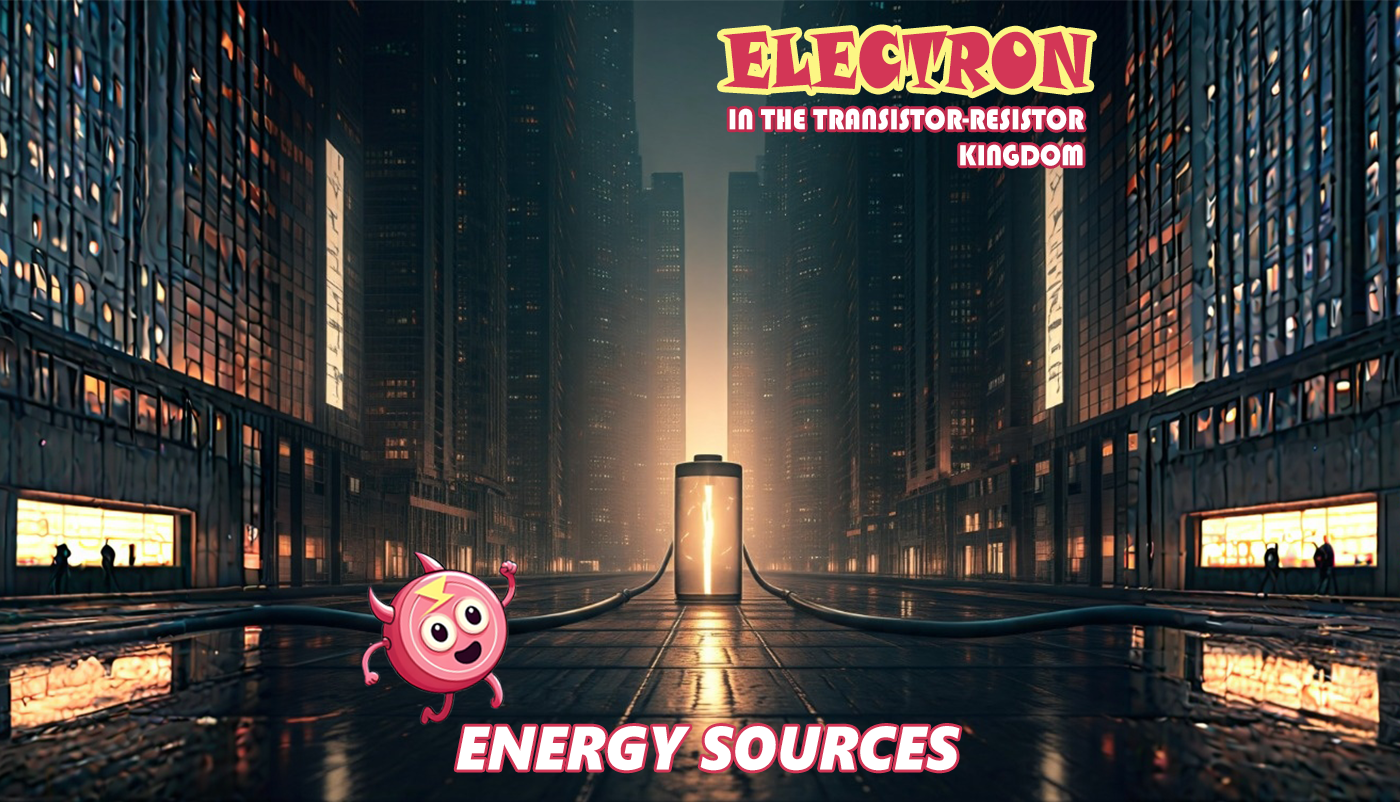
Energy sources in electronics and electromechanical systems are devices that store energy and can release it in the form of high-power pulses or direct current. These devices include accumulators, batteries, capacitors, supercapacitors, and some types of generators, which are featured in the game level. Let's look at how they store and release energy, as well as the hazards and applications associated with high-power spikes that should be considered when playing this game level.
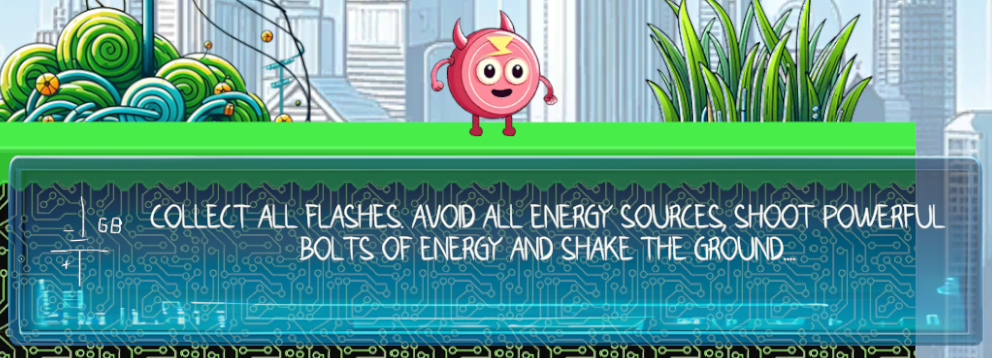
1. Types of Energy Sources and How They Work
1.1. Accumulators and Batteries
Energy Storage: Accumulators and batteries convert chemical energy into electrical energy through electrochemical reactions. When they are charged, a reversible chemical reaction occurs in them, allowing energy to be stored.

Energy Release: When a load is applied, chemical energy is converted into electrical energy, creating a flow of electrons through an external circuit. This allows for a constant current with a relatively stable characteristic.
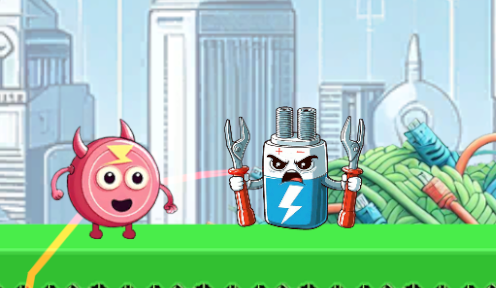
1.2. Capacitors and Supercapacitors
Energy Storage: Capacitors store energy in the form of an electric charge on plates separated by a dielectric. Supercapacitors have a much larger capacity, which allows for more energy to be stored.

Powerful Energy Bursts: When a capacitor or supercapacitor is discharged, the energy is released almost instantly, resulting in a powerful electrical pulse. This property is used in devices that require short-term but powerful bursts of energy, such as lasers, flashbulbs, and pulsed electromagnetic generators.
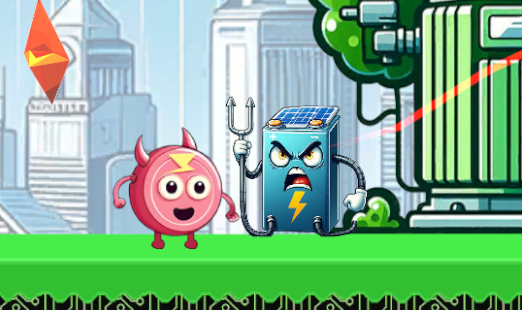
1.3. Generators and Fuel Cells
Energy Storage: Generators store energy in the form of mechanical (rotor rotation) or chemical (fuel) energy.
Energy Firing: When needed, the energy is converted into electricity. Generators create a steady stream of energy, while fuel cells provide long-term operation if fuel is available.

2. Energy Storage and Release Mechanisms
Batteries: A chemical reaction inside a battery stores electrons on one of the electrodes. When a load is applied, the electrons move through the circuit, creating an electric current. Discharging a battery too quickly can cause overheating and damage.
Capacitors: Charge is stored on the plates of a capacitor. When a load is applied, all of the stored energy can be released in a fraction of a second, creating a powerful pulse of voltage and current. This can be used to start powerful motors or to create pulsed discharges.
Supercapacitors: These devices have a much larger capacity and can store more energy than regular capacitors. They are used in applications that require a large power output in an instant, such as in electric vehicles for acceleration or emergency backup power systems.
3. High Energy Burst Applications
Pulsed Lasers and Flashes: Capacitors are used to create a powerful pulse of energy that powers a laser diode or flash lamp. This allows for the creation of very bright and short-lived light pulses.
Electromagnetic catapults and guns: In these systems, capacitors are discharged through a coil, creating a strong magnetic field. This field is used to accelerate a metal object, creating an electromagnetic pulse or catapulting it to high speed.
Power pulse systems: In electric vehicles, supercapacitors are used to provide an instantaneous power pulse during acceleration or in energy recovery systems.
Used in unique games like Electron in the transistor-resistor kingdom.
4. Hazards from high-energy surges
Electric shock and burns: A sudden discharge of a battery or capacitor can cause a strong electrical discharge. This is dangerous to humans and can result in severe burns or electric shock.
Explosion and fire: Batteries and capacitors can explode if damaged or improperly used due to the rapid release of gases or heat. This is especially true for lithium-ion batteries, which can ignite if overheated or damaged.
Short circuit: High-power energy sources can short-circuit and release a huge amount of heat in a short time, which will damage conductors and circuit components, and can cause a fire.
5. Precautions when working with energy sources
Checking and diagnostics: Before using an energy source (battery, capacitor), you should check its condition and the absence of damage. This is especially important for high-voltage or high-power sources.
Use of protective devices: Fuses, diodes and other protective elements must be provided in the circuit to prevent overload or short circuit.
Restricted access: Powerful energy sources must be isolated from accidental contact. Work with such devices should be carried out only with the use of protective equipment (gloves, insulated tools).
Smooth discharge: If it is necessary to discharge a capacitor or battery, resistors or special discharge devices should be used to avoid an instantaneous release of energy.
6. Examples of energy sources and their applications
Lithium-ion batteries: Widely used in portable electronics, electric vehicles and uninterruptible power supplies. Provide stable voltage and the ability to quickly discharge.
Supercapacitors: Used in systems that require instant high power output - in hybrid and electric vehicles, fast charge and discharge systems.
Pulse batteries: Used in military equipment, for example, to launch missiles or power powerful pulse devices.
Power plants: Generators and fuel cells are used to supply large loads, such as industrial equipment or emergency systems, with long-term power.
Power sources that can store and release powerful charges play a key role in modern technology and electronics. Proper handling, knowledge of their properties, and adherence to safety precautions ensure the efficient and safe use of these powerful devices, and will also help overcome obstacles in the game level.
Related games
Electron in the transistor-resistor kingdom
Game: Perform tasks and rest cool. 2574 people play!
Play gameRelated news
Online broadcast about the game Electron in the Transistor-R...
broadcast about the game Electron in the Transistor-Resistor Kingdom
Read morePlatforms in the game Electron in the Transistor-Resistor Ki...
Platforms are the basic game elements in the platformer genre. They are surfaces or objects on which the player can move...
Read moreTeleport as a device for moving matter in space and time
This is a high-tech device that can instantly move a player from one point in the game world to another using plasma tec...
Read more

